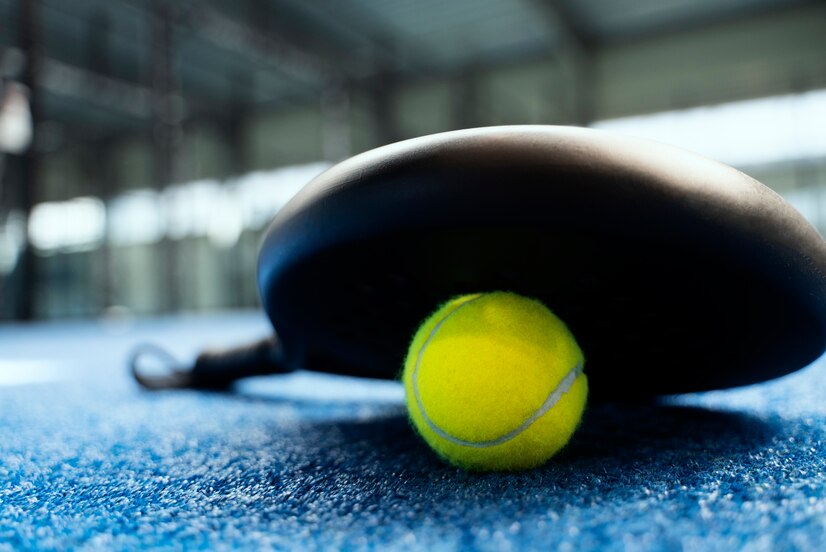In the world of racket sports, padel and tennis are distinguished by specific rules, equipment and courts. However, one question often comes up among enthusiasts and novices alike: what is the difference between a padel ball and a tennis ball? This article will explore the characteristics and uses of each ball, to help you understand the differences and answer any questions you may have on the subject. Whether you’re a padel player, a tennis player or just curious about the subject, this article is for you.
Characteristics of padel balls
Although padel balls are similar in appearance to tennis balls, they have specific features that make them unique. Here are the main characteristics of padel balls:
Size and weight
Padel balls are slightly smaller than tennis balls. Their diameter is generally between 6.35 and 6.77 cm. The weight of these balls varies between 56 and 59.4 grams, making them slightly lighter than tennis balls. This lightness makes them easier to handle on the court.
Pressure and bounce
The internal pressure of padel balls is another distinguishing factor. Padel balls are pressurised to around 0.06 to 0.08 atm (or 6 to 8 kg/cm²). This lower pressure compared with tennis balls makes them softer and changes their bounce. In fact, the bounce of a padel ball is lower, which influences the exchanges and dynamics of the game.
Outer surface
The surface of padel balls is covered with a high-quality felt. Although this felt is similar to that used for tennis balls, it is often finer or of a different texture, allowing better control and optimised interaction with the glass walls and grids of the padel court.
Tennis ball characteristics
To better understand the differences between padel and tennis balls, it’s important to consider the specific characteristics of tennis balls. Here are the main ones:
Size and weight
Tennis balls have a slightly larger diameter than padel balls, between 6.54 and 6.86 cm. Tennis balls also weigh slightly more, ranging from 56 to 59.4 grams. Although these differences may seem small, they have a significant impact on the game.
Pressure and bounce
Tennis balls are highly pressurised, generally between 1.37 and 2.07 atm (or 137 to 207 kPa). This high pressure gives them a much higher bounce. A conventional tennis ball, when dropped from a specific height, will generally bounce between 135 and 147 cm. This high bounce is essential for the game of tennis, encouraging fast, dynamic exchanges.
Outer surface
Like padel balls, tennis balls are also covered in felt, but this is often thicker. This durable felt is designed to resist abrasion and constant impact against the hard ground of tennis courts. The texture and density of the felt provide a better grip and a more stable trajectory for powerful shots.
Specific use of padel and tennis balls
Understanding the characteristics of balls is essential, but it’s just as important to know their specific use in each sport. Here’s an overview of how padel and tennis balls are used:
Use of padel balls
- Terrain: Padel balls are designed for padel courts, which are generally small and surrounded by glass or mesh walls.
- Lifespan: Due to the lower pressure and the materials used, padel balls tend to have a shorter lifespan than tennis balls, especially when used on abrasive courts.
- Style of play: Padel favours longer, more strategic exchanges. The lower pressure of the balls allows better control of shots and precise interaction with the walls.
Use of tennis balls
- Terrain: Tennis balls are specifically designed for use on tennis courts, which vary in surface (clay, grass, hard, etc.).
- Lifespan: Tennis balls are designed to withstand hard hits and more abrasive terrain, giving them a longer lifespan than padel balls.
- Style of play: Tennis is characterised by powerful strokes and fast exchanges. The high bounce of tennis balls encourages this dynamic style of play.
Choosing the right ball for your game
The choice between a padel ball and a tennis ball depends on a number of factors, including your playing style, the type of court and your personal preferences. Here are a few things to consider:
- Court type: Make sure you use the right ball for the court you’re playing on. Padel balls are optimised for padel courts, while tennis balls are designed for different types of tennis surfaces.
- Level of play: Beginners or those who prefer a more strategic game may find padel balls more suitable. More advanced and powerful tennis players will appreciate the bounce and durability of tennis balls.
- Durability: If you’re looking for a durable ball that can withstand a lot of play and practice, tennis balls may be the best choice. However, if you play padel frequently, it is advisable to use specific padel balls for optimum performance.
Although padel and tennis balls may appear similar at first glance, there are significant differences in terms of size, weight, pressure and usage. Choosing the right ball for your specific sport and needs is crucial to maximising your enjoyment and performance on court. For those looking to invest in the right equipment, be sure to visit our Bandeja Shop to discover a wide range of padel and tennis balls, as well as other essential equipment.

